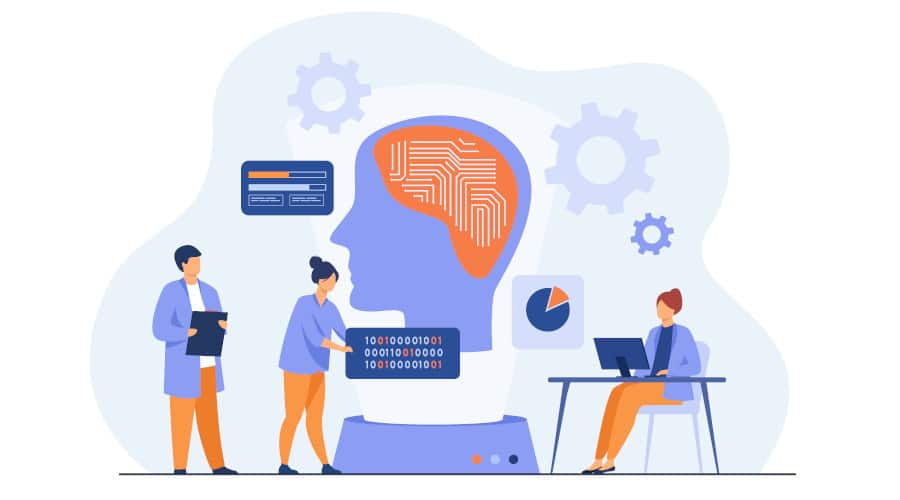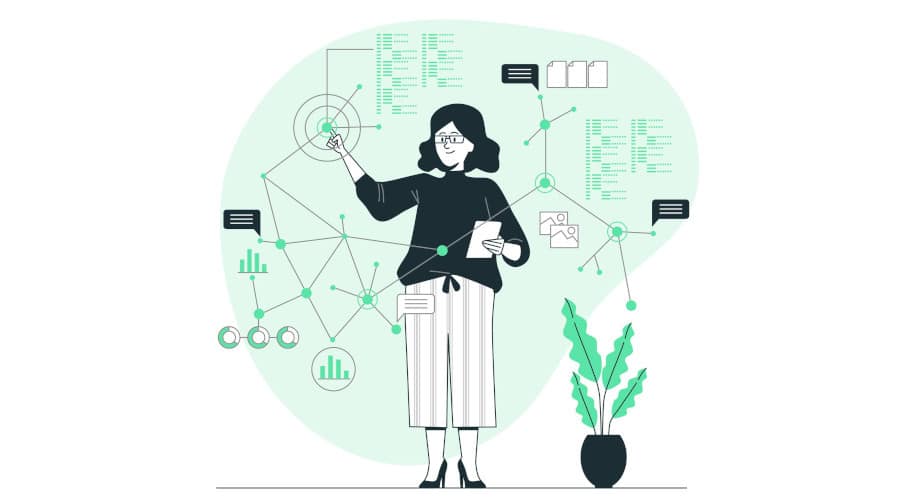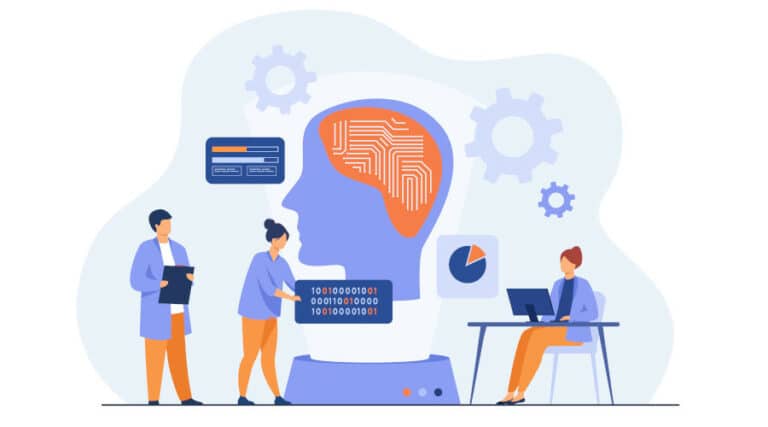Manifold Learning is a technique that simplifies the visualization and analysis of complex, high-dimensional data sets, by finding underlying low-dimensional structures. Find out all you need to know about this essential Machine Learning method! Manifold Learning is a technique that simplifies the visualization and analysis of complex, high-dimensional data sets, by finding underlying low-dimensional structures. Find out all you need to know about this essential Machine Learning method!
The volume of data available to businesses has exploded in recent years, and the rise of Machine Learning is enabling it to be converted into actionable information for strategic decision-making.
However, to truly benefit from Big Data, a number of challenges need to be overcome. One of these is how to interpret, visualize and understand complex, high-dimensional data sets.
This term refers to the number of characteristics or attributes that describe each data point in a dataset. Each of these points is often represented by a vector containing different characteristics or variables.
Let’s take the example of a dataset containing information about houses for sale. Each one can be described by characteristics such as surface area, number of bedrooms and bathrooms, price and location.
If we use these five characteristics to represent each house, then the dimensionality of the data is five.
However, things get very complicated when it comes to analyzing or visualizing data sets with a very high number of dimensions.
This makes it difficult to effectively represent and understand the relationships between data points. To solve this problem, it is necessary to reduce dimensions.
Traditionally, techniques such as Principal Component Analysis (PCA) have been used. Unfortunately, these are not suited to the underlying non-linear structures often present in real-world data.
To overcome this limitation, a new approach has emerged for finding low-dimensional underlying structures in data: Manifold Learning.
What is Manifold Learning?
To fully understand Manifold Learning, we need to start by understanding what a manifold is and why it is relevant to the understanding of complex data.
A manifold is a mathematical abstraction used to describe complex geometric objects, such as curved surfaces or folded structures, in terms of local coordinates and intrinsic dimensions.
Thus, in the context of Manifold Learning, high-dimensional data are considered as points in a space that can be approximated by a low-dimensional variety.
This underlying manifold representation captures the structures and relationships between data points, enabling more intuitive exploration and more accurate analysis.
Another essential concept for understanding Manifold Learning is the Platitude Hypothesis. It’s based on the idea that real data is often generated by a complex process, which reduces its intrinsic dimensionality.
In other words, although data may exist in a high-dimensional space, they actually cover only a small part of it, and are embedded in low-dimensional varieties.
It is by exploiting this property that Manifold Learning can extract the underlying varieties to facilitate the understanding and interpretation of complex data.

Dimension reduction techniques using Manifold Learning principles
Dimension reduction is the key process in Manifold Learning, aimed at projecting high-dimensional data onto a space of reduced dimensions, while preserving as much of its intrinsic structure as possible.
Several techniques have been developed to achieve this goal. Principal Component Analysis (PCA) is a classic approach that remains effective for linear data. However, it has significant limitations for non-linear data.
For its part, the Isomap method relies on the geometry of neighbors to construct a distance graph and estimate the geodesic distances between data points on the manifold. This captures non-linear relationships between data and preserves their overall structure.
Another technique is Locally Linear Embedding or LLE. It focuses on the local reconstruction of data points from their nearest neighbors, finding optimal linear combinations to express each point as a weighted combination of its neighbors.
The aim is to preserve local relationships on the manifold. This can be particularly useful for folded and twisted varieties.
The Distributed Stochastic Neighbor Embedding or t-SNE approach is also well known for its performance in data visualization. It favors the preservation of local distances between data points.
This technique is widely used to represent high-dimensional data in just two or three dimensions, enabling interactive visualization and visual understanding of the underlying structures.
Finally, variational autoencoders or VAEs are probabilistic generative models. They are capable of reducing data dimensions, while preserving essential information thanks to their ability to learn latent distributions in low-dimensional space.
What are the applications of Manifold Learning?
The practical applications of Manifold Learning are many and varied, both in the field of machine learning and beyond.First and foremost, dimension reduction techniques offer significant advantages for data visualization tasks.
They offer the opportunity to visualize and explore large datasets interactively, enabling researchers and analysts to detect trends and patterns that are not immediately obvious.
In addition, one of the main applications is anomaly detection. By exploiting the underlying structure of data, algorithms are able to identify unusual data points that may represent rare events or abnormal behavior.
This approach is also widely used to improve semi-supervised classification of data with limited training sets. By leveraging the geometric structure of data, it becomes possible to take advantage of unlabeled information to improve the performance of Machine Learning models.
Another very interesting application of Manifold Learning is the estimation of missing values in data. Geometric relationships between points enable these values to be inferred accurately, in order to complete a dataset.

Challenges and limitations
No method is perfect, and Manifold Learning obviously has its limitations.
Firstly, a large number of techniques involve adjustable parameters, which can considerably influence the results.
The appropriate choice of these parameters is therefore crucial to obtaining a quality representation of the underlying variety. It is also necessary to assess the quality of the resulting projections.
In addition, Manifold Learning does not fully resolve the well-known “Curse of Dimensionality” problem. For very dense or too sparse data sets, dimension reduction is not always sufficiently effective.
Variety representation can therefore be imprecise or uninformative. These situations can affect learning performance in many ways.
Another major concern is the interpretability of results. Low-dimensional varieties can be difficult to interpret intuitively, especially when the representation is obtained without labels.
Finally, Manifold Learning can be very demanding in terms of computational resources. This is particularly true for massive datasets.
To avoid these hazards and overcome these limitations, technical expertise is required to exploit the full potential of Manifold Learning.
💡Related articles:
| Image Processing |
| Deep Learning – All you need to know |
| Mushroom Recognition |
| Tensor Flow – Google’s ML |
| Dive into ML |
| Data Poisoning |
Conclusion: Manifold Learning, the ideal approach for exploring complex data
By combining dimension reduction techniques and geometric concepts, Manifold Learning enables complex data sets to be visualized and understood in a more meaningful way.
To learn how to master this technique and all the key concepts of Machine Learning, you can choose DataScientest. Our distance learning courses will give you all the skills you need to become a data science professional.
Through the modules dedicated to Machine Learning, you’ll discover methods such as supervised and unsupervised learning, and tools like Scikit-learn.
You’ll also learn about time series forecasting, classification and regression, dimension reduction and text mining. In addition, you’ll master the use of tools such as Keras, TensorFlow and PyTorch.
Other modules cover topics such as Python programming, DataViz, data engineering, Big Data tools and Business Intelligence.
At the end of the course, you’ll have all the keys you need to become a Data Analyst, Data Scientist, Data Engineer or ML Engineer. You’ll also receive a state-recognized diploma, and certification from our cloud partners AWS or Microsoft Azure. Discover DataScientest!
Now you know all about Manifold Learning. For more information on the same subject, take a look at our full report on Machine Learning and our report on Text Mining!










